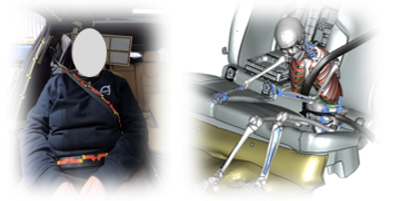Safe and comfortable seat belts for all
To promote safe, equal, and sustainable road transport with varying degrees of automation today and in the future, this project will produce novel data on car passengers’ sitting postures, belt fit, and comfort experience and attitudes, for a diverse population in various aspects of travel, including shared mobility.
The project’s goal is to build knowledge and evaluation methods to refine the seatbelt, focusing on the positioning of the lap and diagonal belt and how they can be assessed in crash tests. This involves developing, refining, and assessing tools and methods, along with studies on car passengers in different riding contexts, including shared mobility.
This project will quantify and categorize combinations of occupant anthropometries, sitting postures, and crash factors, providing insight into seat belt fit, belt to body interaction and crash assessment methods. This will be used by the industry to develop safe and comfortable restraint systems, including adaptive protection systems than customize restraints for individuals and crash severity using sensors in vehicles with high degree of automation. The project will provide the project members with unique knowledge and tools contributing to the Swedish safety leadership. Deliverables include publications and partnerships with essential stakeholders. Additionally, the partners will shape future automotive safety through regulatory frameworks and policy development.
Traffic safety benefit: The project aims to build knowledge and develop evaluation methods to refine seatbelts. This involves creating and refining assessing tools and methods, including enhancing SAFER-HBMs for improved seat belt interaction. Ultimately, this will lead to enhanced occupant safety in cars.
Follow up project of Passenger safety to the next level. Connected and co-work with several HBM projects.
Key words: Seat belt, sitting postures, comfort experience, assessment tools, equity, automation.

